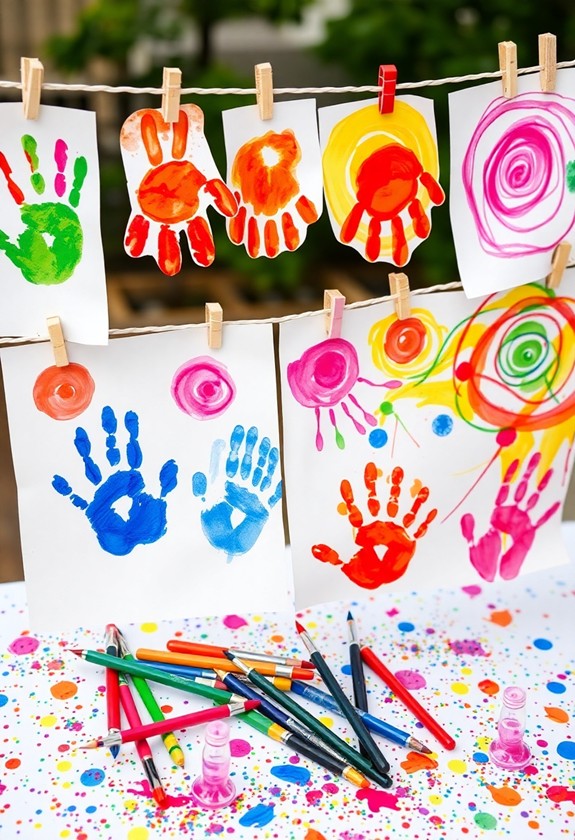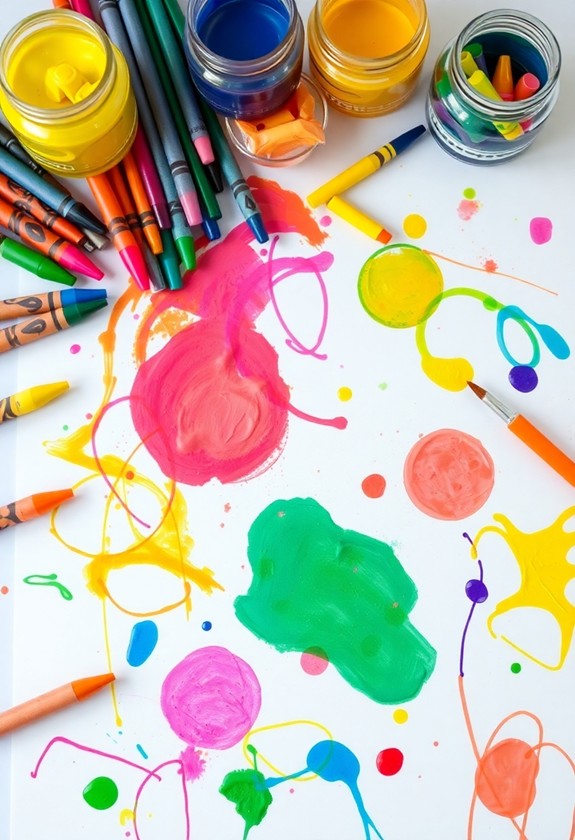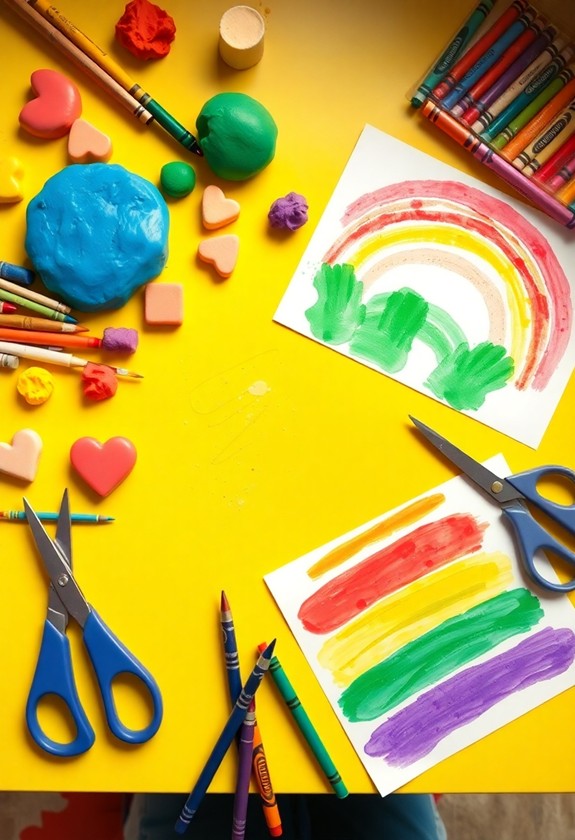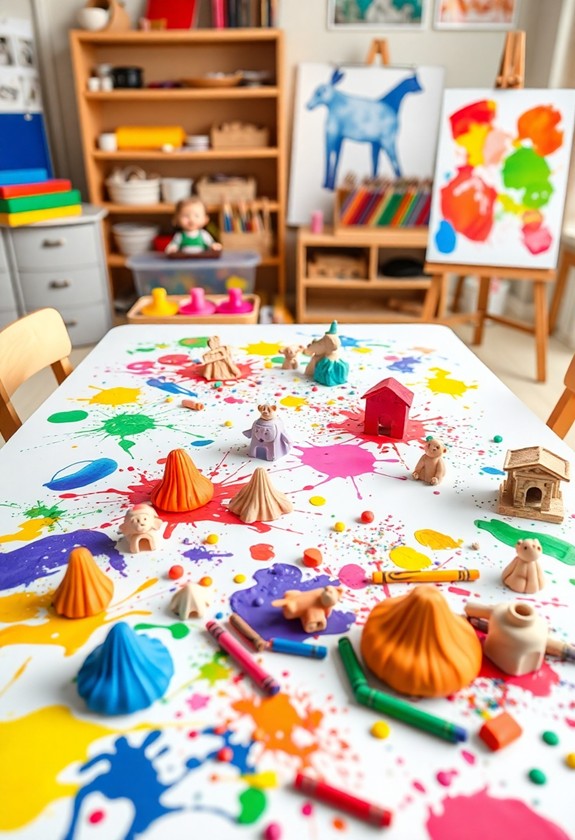Boost your toddler's language skills with these fun art discussions! First, investigate colors together. Point out lively hues in everyday objects, play color scavenger hunts, and mix paints to spark curiosity. Next, delve into shapes! Identify circles, squares, and triangles in your surroundings, create shape collages, and describe their features. Finally, get hands-on with textures. Encourage your little one to feel different surfaces, use words like "smooth" or "bumpy," and try nature-based crafts. These engaging conversations will expand your child's vocabulary and nurture creativity. But wait, there's so much more to uncover about nurturing your toddler's artistic expression!
Creative Highlights
- Color exploration discussions enhance vocabulary and observation skills in toddlers.
- Shape identification conversations improve spatial awareness and descriptive language abilities.
- Texture-focused art talks develop sensory vocabulary and tactile understanding.
- Encouraging toddlers to describe their own artwork fosters self-expression and language development.
- Discussing famous artworks with simple terms introduces cultural concepts and expands visual literacy.
Color Naming and Recognition
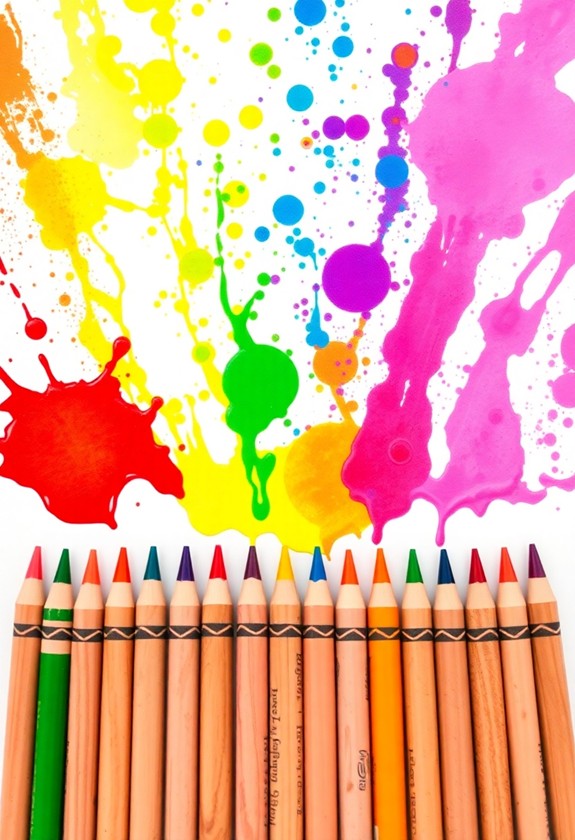
Curiosity about colors is a natural starting point for toddlers' art discussions. You'll love watching their eyes light up as they uncover the lively world around them! Start by pointing out basic colors in everyday objects. "Look at that red apple!" or "See the blue sky?" Make it fun with a color scavenger hunt! Crayola Twistables crayons are perfect for little hands to investigate and experiment with different hues, as they require no sharpening or peeling.
Next, introduce color mixing. It's like magic! Let your little one experiment with:
- Finger paints
- Colored water
- Play-doh
Watch as they create new hues and shades. Encourage their investigation with excited questions: "What happens when we mix yellow and blue? Wow, it's green!"
Don't forget to use color words often in your daily chats. Before you know it, your toddler will be a color-naming pro! And remember, every colorful conversation is a stepping stone to artistic expression.
Shape Identification and Description
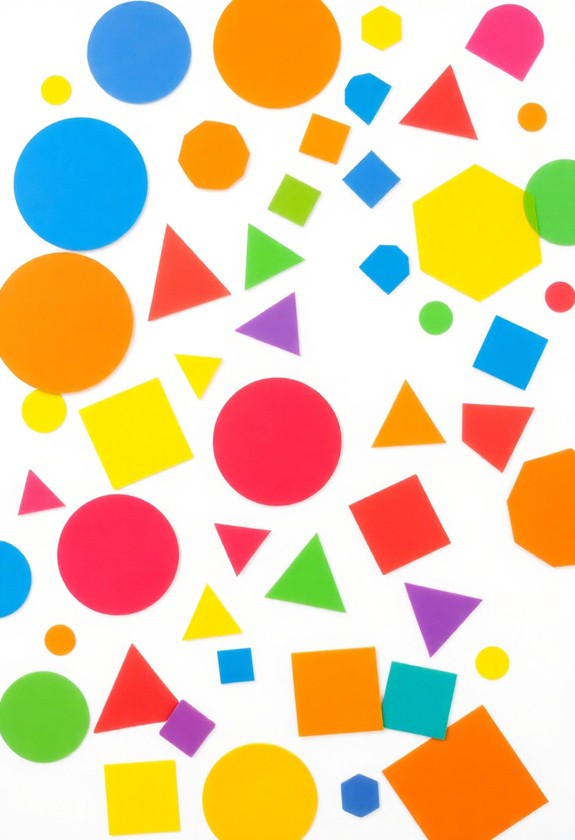
Beyond colors, shapes form the building blocks of art and our visual world. It's time to get your toddler excited about circles, squares, triangles, and more! Start by pointing out shapes in everyday objects. "Look, your plate is a circle!" or "Can you find the square blocks?" Make it a fun game! Using craft supply kits can provide a variety of materials to investigate different shapes and textures, enhancing your child's sensory experience.
Next, try these shape-tastic activities:
- Shape scavenger hunt: Search for shapes around the house
- Play dough shapes: Mold different shapes together
- Cut-and-paste shape collages: Let creativity run wild!
Don't forget to describe shapes using simple terms. "A circle is round and smooth," or "A triangle has three pointy corners!" Encourage your little one to use these words too. Before you know it, they'll be shape-savvy superstars! Remember, practice makes perfect, so keep the shape talk rolling!
Texture Exploration and Vocabulary
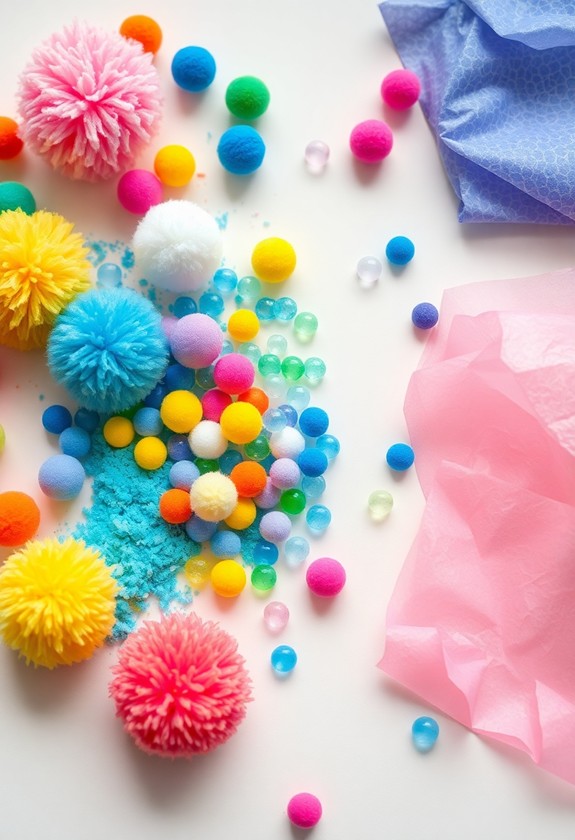
Texture is a fundamental aspect of art that toddlers can examine with their hands and senses. It's time to plunge into the touchable world of art! Encourage your little one to feel different surfaces and describe them. Is it smooth or rough? Bumpy or flat? Soft or hard? Nature-based crafts like leaf rubbings can likewise introduce unique textures as they connect children with the outdoors. This activity improves fine motor skills and promotes environmental awareness.
Create a texture treasure hunt! Gather items like:
- Fluffy cotton balls
- Scratchy sandpaper
- Slippery silk
- Bumpy bubble wrap
Let your toddler investigate each texture and help them find the words to describe their sensations. "Ooh, that's prickly!" or "Wow, so squishy!" Make it fun by comparing textures to familiar objects. "This feels fuzzy like Teddy's fur!" By linking words to tactile experiences, you're building their vocabulary and sensory awareness. It's a hands-on language adventure!
Curious Little Questions
How Can Art Discussions Improve a Toddler's Overall Cognitive Development?
Art discussions can amplify your toddler's brain power! They'll boost problem-solving skills as your little one figures out what they see. Plus, it's a creativity explosion! Your child's imagination will soar as they interpret artwork. But wait, there's more! These chats improve:
- Language skills (new words galore!)
- Critical thinking (spotting details is key!)
- Memory (remembering art elements)
- Emotional intelligence (understanding feelings in art)
What Age Is Ideal to Start Incorporating Art Discussions With Toddlers?
You can start art discussions with toddlers as early as 18 months old! It's amazing how much they absorb at that age. But don't worry if you're a bit late to the game – anytime between 18 months and 3 years is perfect. Remember, it's not about formal lessons. Just point out colors, shapes, and textures in everyday life. "Look at that big, red circle!" or "Feel this fuzzy teddy bear!" These simple conversations spark curiosity and language development. It's fun and easy!
Are There Any Potential Drawbacks to Focusing on Art Discussions for Language Growth?
Although art discussions can be fantastic for language growth, there are a few potential drawbacks to watch out for. You don't want to overdo it! Too much focus on art might limit exposure to other important topics. Moreover, some kids might feel pressured if they're not naturally artistic. And don't forget, art discussions shouldn't replace hands-on creative experiences. Balance is key! Remember, every child is unique, so pay attention to their interests and adjust your approach accordingly. Keep it fun and engaging!
How Can Parents Integrate Art Discussions Into Daily Routines?
You can easily weave art discussions into your daily life! Try these fun ideas:
- During breakfast, chat about the colors on your plates.
- On car rides, play "I spy" with shapes and colors outside.
- At bathtime, make up stories about the bubble sculptures.
- Before bed, describe the pictures in bedtime books.
What Role Does Cultural Diversity Play in Art Discussions for Toddlers?
Imagine a colorful mosaic where every tile represents a unique voice! That's what cultural diversity brings to art discussions for toddlers. You'll open their eyes to a world of artistic expressions, styles, and traditions. It's like planting seeds of curiosity and respect in their young minds. By investigating art from different cultures, you'll:
- Broaden their perspective
- Encourage empathy
- Spark creativity
Plus, it's a fun way to celebrate our global community. So, plunge into it and watch your little one's world expand with every brushstroke!

